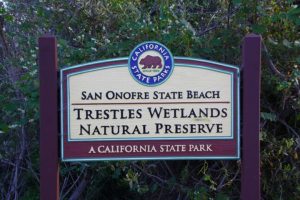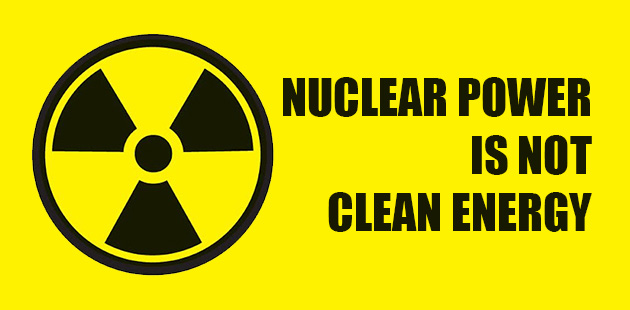Nuclear Energy is Not Clean or Safe
Top Illustration by Tim Forkes
When I tell people we should stop using nuclear energy, close down our nuclear energy plants and eventually find different ways to fuel our nuclear naval fleet, there’s always someone who says nuclear energy is safe and clean. And all I have to do is point to an article like this. Chernobyl’s Reactor 4 Just Woke Up.
Reactor 4 is the one that blew up — literally blew up, spewing radioactive ash like snow for miles — on April 26, 1986. That was over 35 years ago and we’re still talking about it because it is still a terrible hazard. And what the scientists and journalists mean by “woke up” is they believe the radioactive material has re-ignited, started burning, again.
It will be 20,000 years before the area around that explosion will be habitable. You know it has been blocked with fences and walls, but they still have to euthanize animals that venture into the exclusionary zone before they try to leave.
Scientists are still trying to clean up the Fukushima Daiichi nuclear power plant, 10 years after three reactors blew up when a catastrophic earthquake and subsequent tsunami shut down power to the plant and flooded the area. Watch this video report on what’s being done, 10 years later.
Please don’t tell me nuclear power is safe — it isn’t. What do we do with all of that nuclear waste that will be radioactive for 20,000 years? We can’t just keep burying it in places we don’t think will have an impact on the rest of the world. Hell, look at the Runit Dome, or as the locals like to call it, The Tomb. We’re not talking just about spent fuel. We’re talking about containers and materials used to contain the fuel, plus the pools of water used to cool the fuel rods, and everything that contaminated water touches.

(Courtesy of San Onofre State Beach)
Just about 40 miles from where I’m sitting, surrounded by beautiful beaches and campsites — including the Trestles beaches — is the San Onofre Nuclear Generating Station. “They” call it “SONGS” for short. It is in the process of being decommissioned, whatever that means. On their website Southern California Edison (SCE) says, “San Onofre, like nuclear power plants throughout the United States, has a process for safely managing and storing spent nuclear fuel.
“SCE has moved all the spent nuclear fuel at San Onofre to robust, dry storage systems: sealed stainless-steel canisters that are housed in reinforced concrete structures. Passive dry storage of spent nuclear fuel is the safest form of on-site storage. Eliminating the reliance on actively cooled spent fuel pools reduces the risk of NRC-analyzed accident scenarios, dropping to zero the number of events that can result in an offsite release of radiological material.”
The ultimate plan is to move the spent nuclear fuel out of Southern California altogether. As of yet a new site has not been found. Can a “safe” storage site that doesn’t cause issues with anyone be found? As we have witnessed over the years nuclear energy and its spent fuel will never be 100% safe. Ever. As we have seen with other hazardous materials, biological and chemical, we can’t just be 99% safe with nuclear material, it must be 100%.
Of all the nuclear power plants around the world there have been only two major accidents: Chernobyl and Fukushima. But between them they have contaminated thousands of miles around them and we have yet to fully understand the impact on the Earth going into the future — not to mention the impact of the Runit Dome.
Let’s be clear: nuclear power is not clean energy. If it was it wouldn’t need to be stored in stainless steel containers encased in several feet of cement. Cleaning up our nuclear messes has to be part of our efforts to slow down the climate crisis. It is part of the problem.
Just a side note: When Southern California Edison shut down SONGS they replaced the nuclear facility with one that runs off natural gas — a fossil fuel. You know, we just can’t make this shit up.
•••• •••• ••••• •••• ••••
UPDATE, September 24, 2021: Someone had trouble adding a comment to this post so I decided to put it here as an update. And just to show how little I know about nuclear energy and just how unsafe it is, the author of this comment spells it out in even more horrifying detail.
The nuclear fuel waste at San Onofre is unsafely stored in thin-wall (only 5/8″ thick) canisters that the NRC admits are vulnerable to cracking yet have not been inspected for cracks. No technology exists for finding cracks once the highly radioactive and thermally hot fuel rods are loaded in the thin-wall canisters. The concrete overpacks are not sealed. Large air vents in the concrete overpacks are needed for convection cooling.
Other countries use thick-wall metal casks (10″ to over 19″ thick) that don’t have these cracking problems and are designed to be maintained and monitored in a manner to PREVENT major radioactive releases. Only thick-wall metal casks can meet American Standards of Mechanical Engineers (ASME N3) certification. The NRC gives exemptions to these American standards for nuclear pressure vessels. The ASME N3 codes are specifically designed for storage and/or transport containers of spent nuclear fuel.
Legislation should be passed immediately to stop the NRC from approving exemptions to ASME N3 safety requirements. This is a now problem.
Thick-wall metal casks survived the Tsunami and 9.0 earthquake at Fukushima. Thin-wall canisters with partial cracks have no earthquake safety rating according to former San Onofre Chief Nuclear Officer, Tom Palmisano.
Thin-wall metal canisters are used throughout the U.S. Until these unsafe canisters are replaced with thick-wall metal casks, none of us are safe.
Focusing on transporting these unsafe thin-wall canisters somewhere else will no more make us safe than rearranging the deck chairs on the Titanic would have stopped it from sinking.
References and more information at SanOnofreSafety.org.
Donna Gilmore

Tim Forkes started as a writer on a small alternative college newspaper in Milwaukee called the Crazy Shepherd. Writing about entertainment issues, he had the opportunity to speak with many people in show business, from the very famous to the people struggling to find an audience. In 1992 Tim moved to San Diego, CA and pursued other interests, but remained a freelance writer. Upon arrival in Southern California he was struck by how the business of government and business was so intertwined, far more so than he had witnessed in Wisconsin. His interest in entertainment began to wane and the business of politics took its place. He had always been interested in politics, his mother had been a Democratic Party official in Milwaukee, WI, so he sat down to dinner with many of Wisconsin’s greatest political names of the 20th Century: William Proxmire and Clem Zablocki chief among them. As a Marine Corps veteran, Tim has a great interest in veteran affairs, primarily as they relate to the men and women serving and their families. As far as Tim is concerned, the military-industrial complex has enough support. How the men and women who serve are treated is reprehensible, while in the military and especially once they become veterans. Tim would like to help change that reality.

